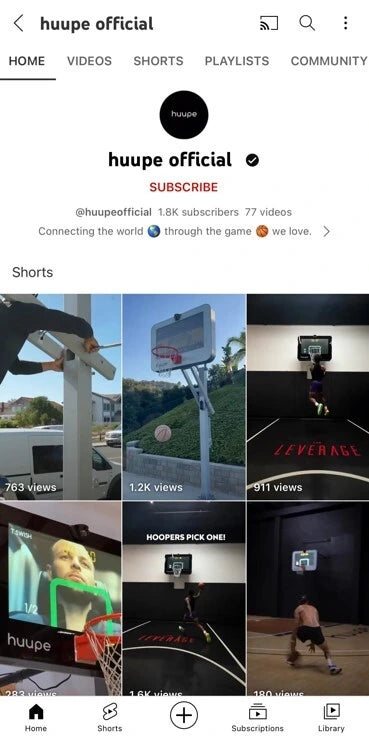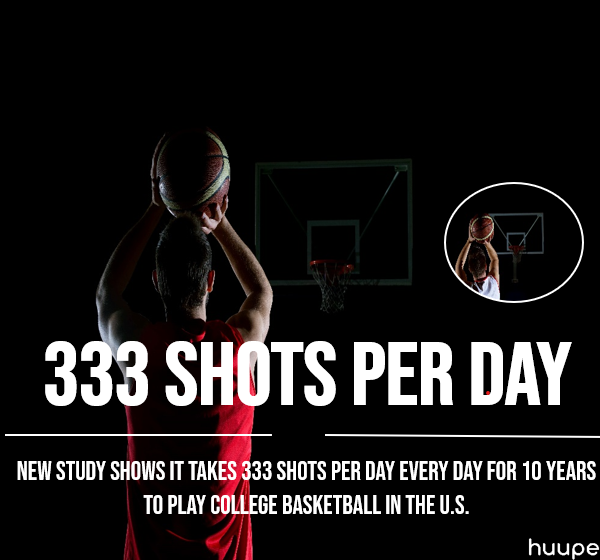
How Many Shots a Day Do You Have to Take to Play College Basketball?
Here is What the Data Says
Let’s be real, playing college sports is awesome. Often times players will receive a full scholarship to attend school and play the sport they love, which covers the cost of tuition, room and board, and includes daily stipends for food. On top of a free education, you get the swag, you get to travel, you get tons of fans and followers, kids look up to you, you get the opportunity to reach moments of immortality for your school, you get to be on TV, you’re a stud on campus, and you have a real shot at making it pro from there.
Well, as awesome as that all sounds, the odds of playing college basketball in the U.S. are slim.
According to the National Federation of State High School Associations, female high school basketball players in the U.S. have a 3.9% chance of making it to play in college, and male high school basketball players have a 3.5% chance of making it to play in college. When you factor in the increasing number of international students coming to take roster spots, that number goes down even more[1].
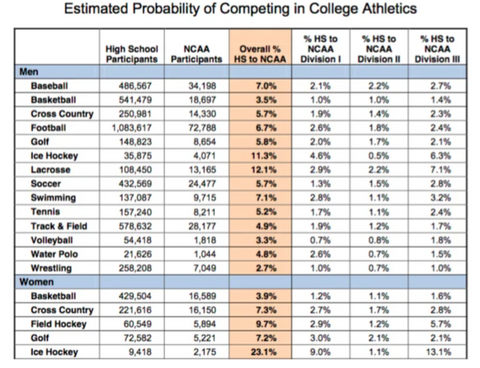
Well, what if we could greatly increase those odds by finding out exactly how many shots per day it takes to make it to the collegiate level? Essentially, this would give you an actionable metric to hit every day to increase the odds of making it.
If you don’t already know, we, at huupe, are extremely driven to help more athletes reach their goals. Our flagship product, the huupe PRO tracks all of your makes and misses and shot location on the court and gathers all of that data, tracks it to the player’s profile page, and allows players to analyze and improve their game from there. We created a product to help young athletes to get better. You can get professional training right from the backboard, which is a screen, and then you can train like the pros and get all of the performance data the pros get right from your huupe and/or mobile app. The huupe also works with any basketball. Once it is installed, you just walk up and play and your shots are being tracked automatically.
You can check out our product in action here, huupe.com, and @huupeofficial on all social channels.
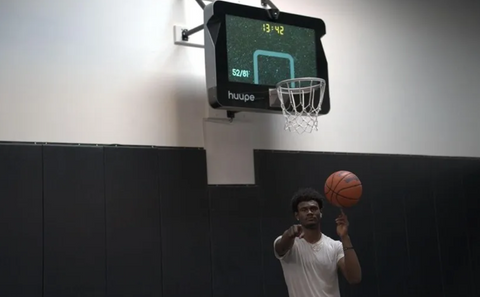
This year, we set out to figure out just how many shots per day it takes to make it to play college basketball.
We conducted hundreds of hours of training sessions, interviews and surveys in order to figure it all out. We asked exactly 100 former and current college basketball players (50 men and 50 women) from all parts of the world to find out how they did it.

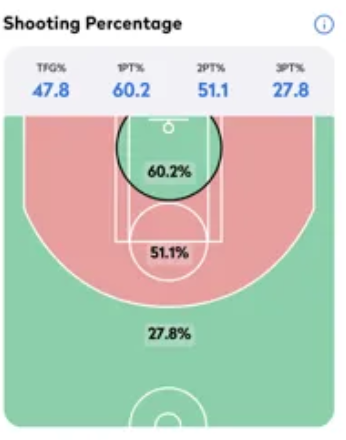
Caveat
Before we dive into the data, we have to address some obvious points. First, becoming a college athlete is incredibly difficult. Second, there are uncontrollable factors like height, injury, politics among high school sports, geographic and economic situations, and more that can drastically effect whether a player can make it to the collegiate level. We have no control over any of these things.
However, we do know that anyone from anywhere in the world can make it. You just have to believe in yourself and put the work in.
If Spudd Webb (5’9), JJ Barea (5’9), Earl Boykins (5’5), and Mugsy Bogues (5’3) can make it to the NBA, so can you, regardless of height. If Giannis Antetokounmpo who grew up as a refugee in Greece, can make it to be MVP and NBA Champion, so can you, regardless of circumstance.
What we can control, though, is how hard we work and how smart we work. We, at huupe, want to figure out exactly how many shots per day it takes to make it to the collegiate basketball level. By knowing this number, can aim to hit that mark every day, and hopefully, make it to the next level.
Survey Overview
For the survey, first, we had to find a big enough sample size to get accurate data. We needed to find 100 college athletes (50 men and 50 women) to sit down with and talk to. This was hard. We had to get creative and we had to be persistent. We used Instagram DM’s, emails, connections we had, and more crazy tactics to talk to 100 current and former college basketball players. Second, there are many topics that we wanted to talk about with them, but found that a shorter amount of questions would allow the survey participants to provide more meaningful responses. Below are some of the questions that we asked. We got deep into these questions with many of these athletes and almost every interview led to getting out a pen and paper and doing math to figure out how many shots per day they were taking by recounting the drills they used to do, the hours they used to play and more details that we were really impressed that they remembered. Some athletes even had their exact training manuals and notebooks from several years ago still in tact.
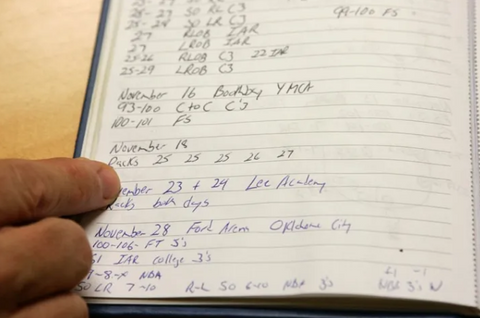
Survey Sample Questions
● When did you start playing basketball?
● Did you play AAU and school basketball?
● How many hours a day would you say you played on average during the offseason? And in-season?
● Did you play pick-up more or train more?
● Were you full-time basketball or did you play other sports?
● When did you go full-time basketball?
● What did your offseason training look like?
● What did your in-season training look like?
● Did you ever keep track of how many shots you were making and/or taking a day?
● If you had to guess, how many shots a day did you take every day during the season and offseason?
The Survey Results
Over 59% of the athletes that participated in this survey informed us that they started to play basketball by ages 5–8.
Over 62% of the athletes dropped all other sports and focused solely on basketball by age 11–12. This factor is extremely important.
Over 90% of the players that we asked confirmed that they did push themselves to play AAU and school basketball while they were growing up in order to play against other basketball players who were the most talented players in their area.
55% of the athletes trained for 2–3 hours on average every day during the regular season and 3–4 hours per day during the off-season.
One of the responses that truly stood out to us was that just over 70% of the people we asked had chosen to train more than play pick-up. This means that drills and working on skills were more important to these athletes than pick-up basketball. Pick-up can often lead to bad habits and doesn’t necessarily translate to creating good players, so this should be a key metric for basketball players.
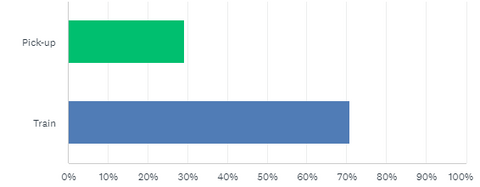
Over 60% of these athletes that we spoke to were did not receive offers or commit to play college basketball until mid way through their senior season. This means that if you stop playing or give up or get injured before your Senior year, your chances of making it to play in college are significantly decreased.
Lastly, and most importantly, based on our survey data, we estimate that it takes on average 2.8 hours of playing basketball per day (year round) and you have to put up 333 shots daily from ages 5–8 to 18 to make it to the collegiate basketball level.
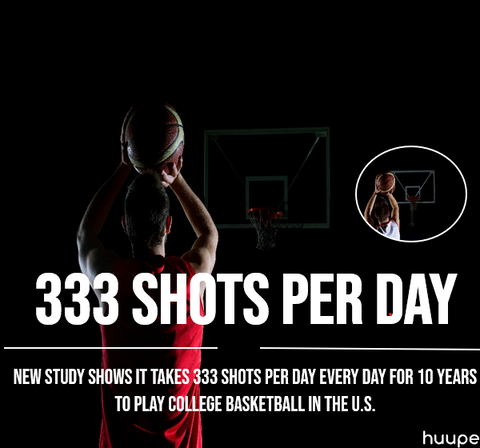
333 shots per day.
huupe Data + What Kind of Shots Make up those 333 Shots?
We also didn’t just conduct a survey. We had many of the athletes who conducted the survey do the workouts they used to do in the off-season growing up to the best of their memories and ability. They were highly accurate in the amount of time they played per day and the amount of shots they got up. They were able to recount their stats incredibly well and it is no surprise — they put the work in every day and were able to remember most of it.
Furthermore, it is interesting to note that during these workouts, many of the athletes conducted similar drills and took similar shots. Another fun fact — when playing by themselves, there was a heavy focus on three-point shooting. For many athletes, over 150 three pointers were taken, and the rest were mid-range dribble pull ups and free throws. Yes, there are some layups and dunks in there woven throughout, but that was not the focus by any means. When unguarded, shooting percentages for these athletes on average were 76.2% from 10ft. — 22ft. (mid-range + deep two) and 67.9% from NCAA three-point land. There is no doubt that these players are really good.

So What Does This Mean?
Well, it means that we now know, roughly, how many shots a day we should be getting up if we want to play college basketball. Is it a guarantee that you make it? No. However, if you do get up 333 shots per day, you will have a much greater chance. According to acclaimed author and researcher, Malcolm Gladwell, 10,000 hours is the amount of time one needs to spend at a particular skill or craft to achieve true expertise or mastery of that skill or craft. Thus, if you take 333 shots per day, then you will likely be playing 2.8 hours per day. Furthermore, if you play 2.8 hours per day, every day, then it will take you about 9.7 years to get to the 10,000 hour mark. And yes, that is over 1 million shots taken. Realistically, if you take into account sick days, vacations and injuries, it will likely take 10–15 years to reach that level of mastery for a dedicated basketball player, which is why it is important to focus solely on basketball if you want to play in college (sorry multi-sport proponents).
It is important for us to note that the huupe makes it easier to track and store all of this data, but you do not need a huupe to do it. You can use a notebook and a pencil, like Dave Hopla, if you’re just starting out.
We hope this article was helpful and inspiring to our young athletes out there. We want to see more unique individuals from unique backgrounds make it, and we’re going to keep providing the tools and doing the research to help all of you out.
Keep believing and keep working! Now, let’s huupe.
For any questions and other inquiries, please email media@huupe.com or visit www.huupe.com.
[1] “Estimated probability of competing in college athletics” Coach Evan Burke. Noting Study from the National Federation of State High School Associations 2014–2015 High School Athletics Participation Survey. Estimated probability of competing in college athletics
Recommended Blog Posts













